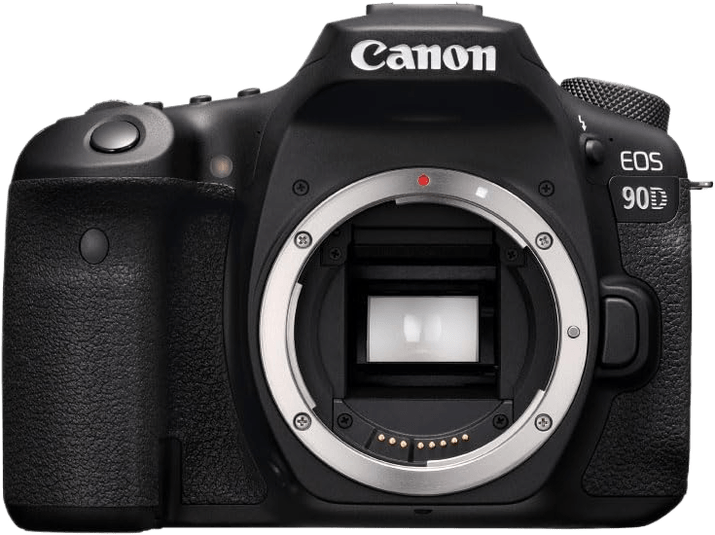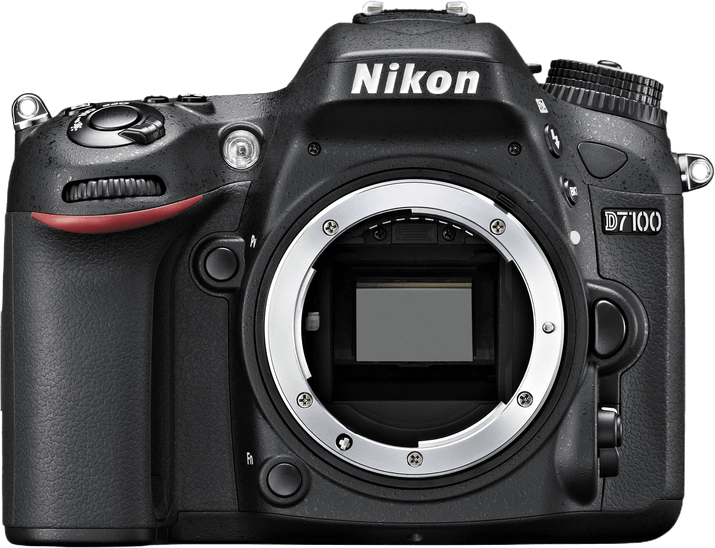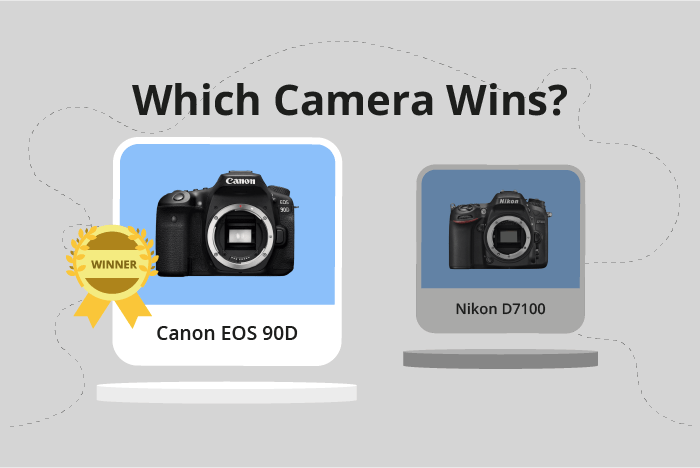Canon EOS 90D vs Nikon D7100 Comparison
Canon EOS 90D

Nikon D7100

The Canon EOS 90D takes the lead with a score of 67/100, slightly outperforming the Nikon D7100, which scored 65/100. Both cameras are DSLRs and were launched with similar price tags: $1199 for the 90D and $1200 for the D7100. They also share comparable dimensions, with the 90D measuring 141 x 105 x 77mm and the D7100 at 136 x 107 x 76mm.
The Canon EOS 90D gains an edge due to its more recent release in 2019, as opposed to the Nikon D7100’s 2013 release. Additionally, the 90D is lighter at 701g (1.55lbs), making it more comfortable to carry and handle than the D7100’s 765g (1.69lbs) weight.
On the other hand, the Nikon D7100 has a slightly smaller body, which could be an advantage for those looking for a more compact camera. However, this difference is minimal and may not be significant for most users.
Taking these specifications into account, the Canon EOS 90D emerges as the superior choice due to its more recent release and lighter weight, while the Nikon D7100’s smaller size offers only a minor advantage.
Canon EOS 90D vs Nikon D7100 Overview and Optics
The Nikon D7100 outperforms the Canon EOS 90D in optics with a score of 67/100 compared to the 90D’s 62/100. Both cameras share several specifications, including sensor type (CMOS), sensor size (APS-C), and the absence of image stabilization. However, there are notable differences that contribute to the Nikon D7100’s higher score.
The Canon EOS 90D boasts a higher megapixel count at 33 compared to the Nikon D7100’s 24.1, which allows for capturing more detailed images. It also has a faster shooting speed of 10 frames per second, enabling better performance in capturing fast-moving subjects. The 90D is equipped with a more advanced Digic 8 processor, contributing to improved image processing and overall performance.
On the other hand, the Nikon D7100 has a significantly higher DXOMARK score for its sensor at 83, compared to the 90D’s 58. This indicates that the D7100’s sensor provides better overall image quality, including dynamic range and low-light performance. Additionally, the D7100 uses the Nikon F DX lens mount, which offers a wide range of compatible lenses, giving photographers more flexibility in their lens choices.
Despite the Canon EOS 90D’s higher megapixel count and shooting speed, the Nikon D7100’s superior sensor quality and lens compatibility ultimately make it the better choice for optics. The 90D may be more suitable for situations requiring fast shooting speeds and higher resolution, but the D7100’s higher DXOMARK score and lens options provide a more versatile and well-rounded camera.
Canon EOS 90D vs Nikon D7100 Video Performance
The Canon EOS 90D outperforms the Nikon D7100 in video capabilities with a significant 34-point difference in their scores, 91/100 and 57/100 respectively. Both cameras share some common specifications, such as time-lapse functionality, which allows users to create stunning time-lapse videos with ease.
The Canon EOS 90D excels in several aspects, making it the superior choice for video recording. Its maximum video resolution is 4K (3840 x 2160), providing users with crisp, high-quality footage. Moreover, the EOS 90D supports a maximum video frame rate of 120fps, which enables smooth slow-motion video capture. These features contribute to the camera’s high video score and make it an excellent option for videographers seeking top-notch video quality and performance.
On the other hand, the Nikon D7100 offers a maximum video resolution of Full HD (1920 x 1080) and a maximum video frame rate of 30fps. While these specifications are not as impressive as those of the Canon EOS 90D, they still allow users to capture decent quality videos. The D7100’s lower video score reflects its relatively limited video capabilities compared to the EOS 90D.
Taking all the specifications into account, it is clear that the Canon EOS 90D is the superior camera for video recording. Its 4K resolution and 120fps frame rate provide users with high-quality, smooth footage that surpasses the capabilities of the Nikon D7100. Nevertheless, the Nikon D7100 remains a suitable option for those who prioritize other aspects of photography and are content with Full HD video quality.
Canon EOS 90D vs Nikon D7100 Features and Benefits
The Canon EOS 90D outperforms the Nikon D7100 in features with a score of 83/100 compared to the Nikon’s 59/100. Both cameras share some common specifications, such as a 3-inch screen size, the absence of GPS, and WIFI connectivity. However, the Canon EOS 90D surpasses the Nikon D7100 in several aspects, making it the better option for those looking for advanced features.
The Canon EOS 90D has a touchscreen, making it more user-friendly and easier to navigate compared to the Nikon D7100, which lacks this feature. Additionally, the Canon EOS 90D comes with a flip screen, allowing for more flexible shooting angles and better framing capabilities. The camera also supports Bluetooth connectivity, enabling faster and seamless file transfers.
On the other hand, the Nikon D7100 has a slightly larger screen at 3.2 inches, and a higher screen resolution of 1228800 dots, providing a clearer and more detailed display. However, these advantages do not outweigh the benefits offered by the Canon EOS 90D’s additional features.
Taking all aspects into consideration, the Canon EOS 90D is the superior camera in terms of features. Its touchscreen, flip screen, and Bluetooth connectivity make it more versatile and convenient for users. While the Nikon D7100 has a larger screen and higher resolution, these factors do not compensate for the lack of advanced features found in the Canon EOS 90D. Therefore, the Canon EOS 90D is the recommended choice for individuals seeking a camera with enhanced features and capabilities.
Canon EOS 90D vs Nikon D7100 Storage and Battery
The Nikon D7100 outperforms the Canon EOS 90D in storage and battery with a score of 76/100, while the Canon EOS 90D scores 48/100. Both cameras have one feature in common: they do not support USB charging.
The Nikon D7100 excels with two memory card slots, accepting SD, SDHC, and SDXC cards, providing more storage capacity and flexibility. Its battery type is EN-EL15, offering 950 shots per charge. In comparison, the Canon EOS 90D has only one memory card slot, compatible with SD, SDHC, and SDXC (UHS-II) cards. Its battery, the LP-E6N, provides a longer battery life with 1300 shots per charge.
Despite the Canon EOS 90D’s lower storage and battery score, its battery life is superior to the Nikon D7100. However, the Nikon D7100’s dual memory card slots make it the better choice for storage capabilities. Considering these points, the Nikon D7100 is the winner in terms of storage, while the Canon EOS 90D takes the lead in battery life.
Alternatives to the Canon EOS 90D and Nikon D7100
Are you still undecided about which camera is right for you? Have a look at these popular comparisons that feature the Canon EOS 90D or the Nikon D7100:

